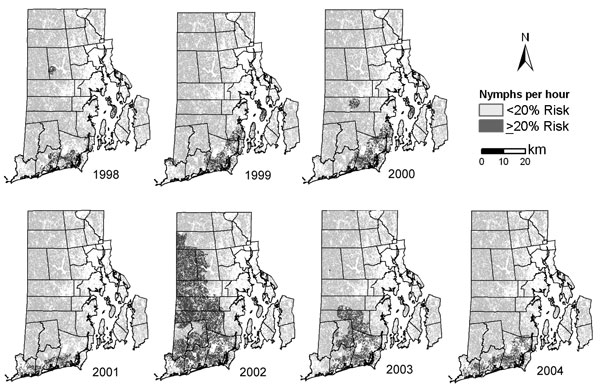Volume 13, Number 4—April 2007
Dispatch
Human Babesia microti Incidence and Ixodes scapularis Distribution, Rhode Island, 1998–2004
Figure 2

Figure 2. Risk for human case of babesiosis, Rhode Island, USA, derived from simple logistic regression analysis of census tracts with and without babesiosis cases (Figure 1), predicted by average Ixodes scapularis nymphs collected per hour per census tract. The cut-off level for the 2 classes was decided by the number of nymphs collected per hour needed to create a 20% probability of a babesiosis case occurring in a census tract. The continuous nymphal tick abundance surface was modified to subtract areas unsuitable for tick habitat because they contain water, unforested agriculture, or urban land.
Page created: June 28, 2010
Page updated: June 28, 2010
Page reviewed: June 28, 2010
The conclusions, findings, and opinions expressed by authors contributing to this journal do not necessarily reflect the official position of the U.S. Department of Health and Human Services, the Public Health Service, the Centers for Disease Control and Prevention, or the authors' affiliated institutions. Use of trade names is for identification only and does not imply endorsement by any of the groups named above.